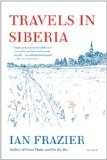Summary | Excerpt | Reviews | Beyond the Book | Readalikes | Genres & Themes | Author Bio

Critics' Opinion:
Readers' Opinion:
First Published:
Oct 2010, 544 pages
Paperback:
Sep 2011, 560 pages
 Book Reviewed by:
Book Reviewed by:
Jennifer G Wilder
Buy This Book
Because of the cold, a lot of central Siberia and most of the east lie under permafrost - ground permanently frozen, sometimes to more than three thousand feet down. Permafrost also covers all the tundra region. Agriculture on any large scale is impossible in the permafrost zone, though in more forgiving parts of it people have kitchen gardens, and greenhouse farming occasionally succeeds. Much of Siberia's taiga rests on permafrost, implying a shaky future for the forest if the permafrost melts, and a shakier one, scientists say, for the earth's atmospheric chemistry. Huge amounts of climate-changing methane would be released into the air.
Cities and villages in the permafrost zone must have basic necessities brought in. Fuel comes in steel barrels that are about three feet high and hold fifty-three gallons. Around settled places these empty barrels are everywhere, sometimes littering the bare tundra surreally as far as you can see. In 1997, the Los Angeles Times estimated that in Chukotka, the part of farthest Siberia just across from Alaska, the Soviets had left behind about two million barrels, or about sixteen barrels for each person living there. Fewer people, and probably more barrels, are in Chukotka today.
What, then, is good about Siberia?
Its natural resources, though hard to get at, are amazing. Its coal reserves, centered in the Kuznetsk Basin mining region in south-central Siberia, are some of the largest in the world. The Kuznetsk Basin is also rich in iron ore, a combination that made this region Russia's armory. Siberia has minerals like cobalt, zinc, copper, lead, tin, and mercury in great abundance; in Norilsk, the second-largest city in the world above the Arctic Circle, the Soviets dug the world's largest nickel mine. The diamond mines at Mirny, near the Vilyui River, are second only to South Africa's. Siberia has supplied the Russian treasury with silver and gold since tsarist times; during the 1930s, the Kolyma region of eastern Siberia produced, by means of the cruelest mines in history, about half the gold then being mined in the world. Russia has some of the world's largest reserves of petroleum and natural gas. A lot of those reserves are in Siberia.
Along the route of the Trans-Siberian Railway, trains of oil tank cars extend across the landscape for miles. Each tank car, black and tarry-looking, with faded white markings, resembles the one that follows it; slowly rolling past a grade crossing of the Trans-Siberian Railway, a trainload of these cars defines monotony. The Trans-Siberian Railway covers 9,288 kilometers between Moscow and the Pacific port of Vladivostok, or 5,771 miles. In other words, if it were twenty-one miles longer, it would be exactly twice as long as Interstate 80 from New Jersey to California. Lying awake near the tracks in some remote spot, you hear trains going by all through the night with scarcely a pause. Sitting beside the tracks and observing the point in the distance where they and the cables above them merge - the Trans-Siberian Railway is all-electric, with overhead cables like a streetcar line - you find that the tracks are empty of traffic only for five or ten minutes at a time.
Besides oil, the railway carries coal, machinery parts, giant tires, scrap iron, and endless containers saying HANJIN or SEA-LAND or MAERSK on their sides, just like the containers stacked five stories high around the Port of Newark, New Jersey, and probably every other port in the world. Now and then a passenger train goes by, and if the time is summer and the weather, as usual, hot, many shirtless passengers are hanging from the open windows with the curtains flapping beside them. Not even the most luxurious car on the Trans-Siberian Railway offers air-conditioning. Then more freight comes along, sometimes timber by the trainload. Siberian timber can be three or four feet in diameter, a size only rarely seen on logging trucks in America today. Some of these trees are called korabel'nie sosni - literally, "caravel pines," trees from which ships' masts were made.
Excerpted from Travels in Siberia by Ian Frazier. Copyright © 2010 by Ian Frazier. Excerpted by permission of Farrar, Straus & Giroux. All rights reserved. No part of this excerpt may be reproduced or reprinted without permission in writing from the publisher.





The House on Biscayne Bay
by Chanel Cleeton
As death stalks a gothic mansion in Miami, the lives of two women intertwine as the past and present collide.

The Flower Sisters
by Michelle Collins Anderson
From the new Fannie Flagg of the Ozarks, a richly-woven story of family, forgiveness, and reinvention.

The Funeral Cryer by Wenyan Lu
Debut novelist Wenyan Lu brings us this witty yet profound story about one woman's midlife reawakening in contemporary rural China.
Your guide toexceptional books
BookBrowse seeks out and recommends the best in contemporary fiction and nonfiction—books that not only engage and entertain but also deepen our understanding of ourselves and the world around us.